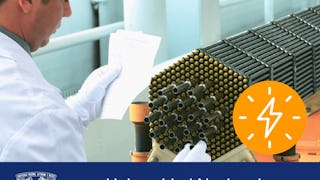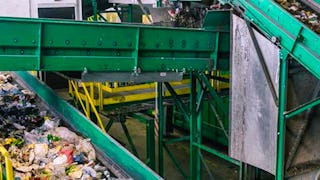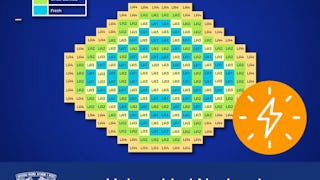The basic idea behind this MOOC, is to present recent data on fuel characterization, slagging, fouling, corrosion, and trace element transformations, in a course that can be readily provided for students and industry people.

Enjoy unlimited growth with a year of Coursera Plus for $199 (regularly $399). Save now.

Ash-Related Operational Challenges in Energy Utilization of Sustainable Fuels

Instructor: Flemming Jappe Frandsen
2,691 already enrolled
Included with
(27 reviews)
Recommended experience
What you'll learn
Explain basic physical and chemical differences between solid fuels like coal, biomass, waste etc., and interpret fuel analyses of them
Describe critical ash-forming element are release, mechanisms for formation of aerosols and fly ash particles, and ash transport
Quantify the processes of deposit build-up, sintering and shedding
Explain the fundamentals of high-temperature corrosion in thermal fuel conversion systems
Skills you'll gain
Details to know

Add to your LinkedIn profile
50 assignments
See how employees at top companies are mastering in-demand skills

There are 9 modules in this course
This module will introduce the basic content of the course to the student.
What's included
1 video1 reading
Module 2 (Fuel and Ash Chemistry and Characterization) is subdivided into 7 lessons, dealing with fuel and ash characterization, and is meant as an introduction to different techniques, applied to characterize fuels or ash samples. Both simple techniques like proximate and ultimate analyses, but also advanced techniques like Simultaneous Thermal Analysis (STA) analysis of ash fusion and Scanning Electron Microcospy (SEM), are introduced. There is also included an introduction to online fuel databases.
What's included
7 videos7 readings7 assignments
This module gives an introduction to how critical ash-forming elements like K, S, and Cl, but also Na, Zn and Pb, are released from fuels, during thermal conversion.Module 3 (Release of Critical Ash-Forming Elements) deals with release of critical ash-forming elements, mainly K, S and Cl, but also Na, Zn, and Pb. The module has four lessons and deal with both fixed-bed and entrained flow release quantification. Further, there is a thorough introduction to K-release from K-Ca-P-rich ashes.
What's included
4 videos4 readings4 assignments
As soon as the critical ash-forming elements have been released to the gas, formation of fly ash and aerosols begin, which is the subject of Module 4 (Formation of Fly Ash and Aerosols). This module is subdivided into 5 lessons, introducing both fundamental and detailed physical aspects of residual fly ash formation, as well as formation of and harmful health effects of combustion-derived aerosols. Finally, there is a thorough introduction to the pioneering Danish full.scale aerosol formation studies at Haslev respectively Slagelse CHP.
What's included
5 videos5 readings5 assignments
Next natural step in the chain of events leading to troublesome deposit formation is the transport and adhesion of ash species (gases, aerosols and particles), which is the subject of Module 5 (Transport and Adhesion of Ash Particles), thoroughly addressing both important transport mechanisms like diffusion, thermophoresis and inertial impaction, as well as mechanisms of adhesion and different criteria for sticking of ash species.
What's included
7 videos7 readings7 assignments
As soon as the ash species stick to the surface of the deposit, a build-up, consolidation and shedding of deposit begins. These are extremely complex, interaction phenomena, involving both physical and chemical aspects. This is the subject of Module 6 (Deposit Build-Up, Consolidation and Shedding), which also covers practical experiences in performing deposit measurements in full-scale.
What's included
9 videos9 readings9 assignments
One of the consequences of deposit formation is the possible chemical interaction between the deposit and the heat transfer tube, better known as corrosion, which is outlined in Module 7 (High-Temperature Cl-Corrosion), based on several years of research in this field at our Department at DTU. Aspects of corrosion underneath deposits formed in biomass- as well as waste-fired units are covered in details.
What's included
4 videos4 readings4 assignments
There are a number of ways to minimize corrosion, aerosol and ash deposit formation in boilers, one of them being the use of additives to affect the chemistry in the freeboard of the boiler, thereby minimizing e.g. the concentration of Cl in the inner layers of the deposit, or, minimizing the mass loading of aerosols and thereby the environmental impact of these. This has for years been a major research activity at DTU and Module 8 (Use of additives to Minimize Deposit Formation and High-Temperature Corrosion) therefore deals with the application of additives, both the classical Al-Si- and the more sophisticated S-based additives.
What's included
7 videos7 readings7 assignments
Finally, Module 9 (Danish Case-Studies on Ash and Deposit Formation) in this MOOC deals with Danish case studies of ash and deposit formation in utility boilers. The module covers three classical cases from dedicated straw-fired grate units: the Haslev/Slagelse, Rudkøbing and Masnedø CHPs. After this, an introduction to the MKS1 demoprogramme on co-firing of coal and straw in pc-fired units follow, this campaign marked a progressive step toward the ultimative shift from pure biomass-firing in grate units, to biodust-firing in pf-units. The last two lessons in this module covers biodust-firing at the Avedøre Power Station, with special focus on aerosol and deposit formation and chemistry, with and without the use of coal fly ash as an additive.
What's included
7 videos7 readings7 assignments
Instructor

Offered by
Explore more from Environmental Science and Sustainability
 Status: Free Trial
Status: Free TrialUniversidad Nacional Autónoma de México
 Status: Free Trial
Status: Free TrialUniversidad Nacional Autónoma de México
 Status: Free Trial
Status: Free TrialL&T EduTech
 Status: Free Trial
Status: Free TrialUniversidad Nacional Autónoma de México
Why people choose Coursera for their career




Learner reviews
27 reviews
- 5 stars
81.48%
- 4 stars
18.51%
- 3 stars
0%
- 2 stars
0%
- 1 star
0%
Showing 3 of 27
Reviewed on Mar 29, 2022
Very informative and intriguing. The slides quality was phenomenal and the voice pitch was so communicative.
Reviewed on Apr 10, 2024
Problem with audio of several videos should be fixed.
Reviewed on Dec 18, 2020
This course was informative, there were a lot of things I needed to review and learn more about as I am not quite familiar with various terms included in the course materials.

Open new doors with Coursera Plus
Unlimited access to 10,000+ world-class courses, hands-on projects, and job-ready certificate programs - all included in your subscription
Advance your career with an online degree
Earn a degree from world-class universities - 100% online
Join over 3,400 global companies that choose Coursera for Business
Upskill your employees to excel in the digital economy
Frequently asked questions
To access the course materials, assignments and to earn a Certificate, you will need to purchase the Certificate experience when you enroll in a course. You can try a Free Trial instead, or apply for Financial Aid. The course may offer 'Full Course, No Certificate' instead. This option lets you see all course materials, submit required assessments, and get a final grade. This also means that you will not be able to purchase a Certificate experience.
When you purchase a Certificate you get access to all course materials, including graded assignments. Upon completing the course, your electronic Certificate will be added to your Accomplishments page - from there, you can print your Certificate or add it to your LinkedIn profile.
Yes. In select learning programs, you can apply for financial aid or a scholarship if you can’t afford the enrollment fee. If fin aid or scholarship is available for your learning program selection, you’ll find a link to apply on the description page.
More questions
Financial aid available,

